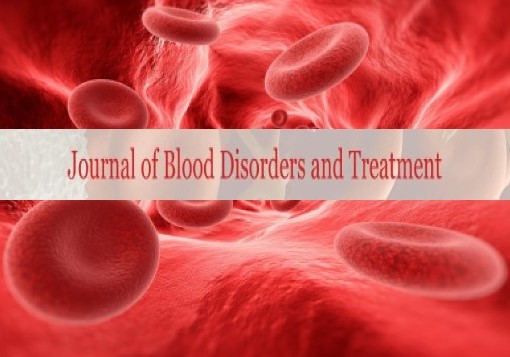A Closure Look on Hemophilia
Received: 02-May-2021 Accepted Date: May 15, 2021; Published: 22-May-2021
This open-access article is distributed under the terms of the Creative Commons Attribution Non-Commercial License (CC BY-NC) (http://creativecommons.org/licenses/by-nc/4.0/), which permits reuse, distribution and reproduction of the article, provided that the original work is properly cited and the reuse is restricted to noncommercial purposes. For commercial reuse, contact reprints@pulsus.com
Abstract
Introduction
During recent years, the accessibility of coagulation factor substitution treatment has extraordinarily added to the improved consideration of individuals with haemophilia. Following the blood-borne viral diseases in the last part of the 1970s and mid-1980, brought about by coagulation factor concentrates produced utilizing non-virally inactivated pooled plasma, the requirement for more secure treatment got pivotal to the haemophilia local area. The presentation of infection inactivated plasma-determined coagulation factors and afterward of recombinant items has changed the consideration of these individuals. These restorative weapons have improved their personal satisfaction and that of their families and allowed home treatment, i.e., factor substitution treatment at normal spans to forestall both draining and the resultant joint harm (for example essential prophylaxis). In like manner, a close to ordinary way of life and future have been accomplished [1].
The principle current issue in haemophilia is the beginning of alloantibodies inactivating the implanted coagulation factor, even though insusceptible resilience regimens dependent on long haul everyday infusions of huge measurements of coagulation factors can annihilate inhibitors in around 66% of influenced patients. Also, accessibility of items that sidestep the inherent coagulation surrenders have significantly improved the administration of this inconvenience. At last, escalated research is given to quality exchange treatment, the best way to eventually acquire fix in haemophilia. Haemophilia An and B are X chromosome-connected draining issues included among the uncommon illnesses and brought about by transformations in the factor VIII (FVIII) and factor IX (FIX) qualities. The two variables participate in the inherent pathway of blood coagulation and influenced people have extreme, moderate and mellow types of the illnesses, characterized by factor plasma levels of 1% or less, 2 to 5% and 6 to 40%, separately. The pervasiveness of haemophilia an is 1 out of 5000 male live births, and that of haemophilia B is 1 of every 30,000 [2]. The main current depiction of haemophilia is from John Conrad Otto, a doctor from Philadelphia, who in 1803 distributed "A record of a haemorrhagic air existing in specific families . He plainly appreciated the cardinal highlights of haemophilia, i.e., an acquired inclination of guys to drain. Be that as it may, the main utilization of "haemophilia" shows up in an exposition written in 1828 by Hoff from the University of Zurich. Haemophilia B was recognized from the more normal haemophilia An out of 1952, and was frequently alluded to as "Christmas sickness" after the last name of the main kid depicted with this condition Haemophilia is now and again alluded to as "the regal infection", on the grounds that few individuals from illustrious families in Europe were influenced by this scourge attributable to the way that Victoria, Queen of England from 1837 to 1901, was a haemophilia B transporter . Her eighth child Leopold had haemophilia B, experienced successive haemorrhages and passed on of a cerebrum discharge at 31 years old. Two Queen Victoria's little girls, Alice and Beatrice, were transporters of haemophilia B and sent the illness on to the Spanish, German and Russian regal families [4]. The draining inclination of haemophilia was initially accepted to be because of a delicacy of veins. During the 1930s flawed platelets were believed to be the most probable reason. At that point, in 1937, Patek and Taylor from Harvard found that they could address the coagulation deformity by adding a substance separated from plasma. This was called hostile to haemophilic globulin. In 1944, Pavlosky from Buenos Aires, showed that blood from one haemophiliac could address the coagulation deformity of another haemophiliac and the other way around. He had unearthed two patients with a lack in various proteins factor VIII and factor IX. There are various arising and thickly populated nations, like India and China, where the degree of haemophilia care is a long way from being agreeable. For these nations, which are quickly building up an undeniable degree of innovative fitness, it is presumably more fitting to cultivate DNA innovation with the objective to deliver recombinant factors and create quality exchange instead of projects dependent on plasma fractionation. Then again, the mechanical creation of plasmadetermined variables should proceed and extend, to meet the expanding needs and requests of those nations (uniquely in South America and Eastern Europe) that are quickly improving their projects of medical care conveyance to people with haemophilia and that can't bear the cost of the greater expense of recombinant elements [3].





